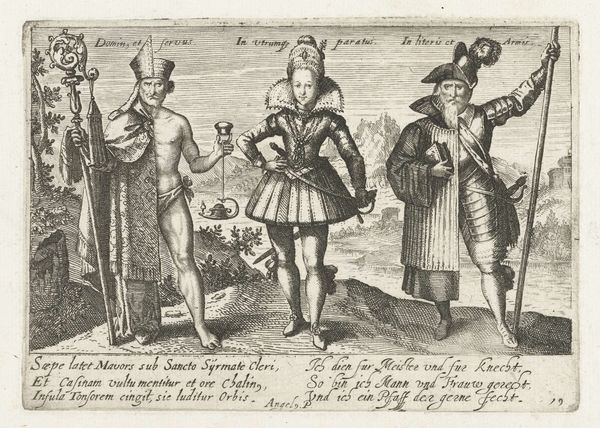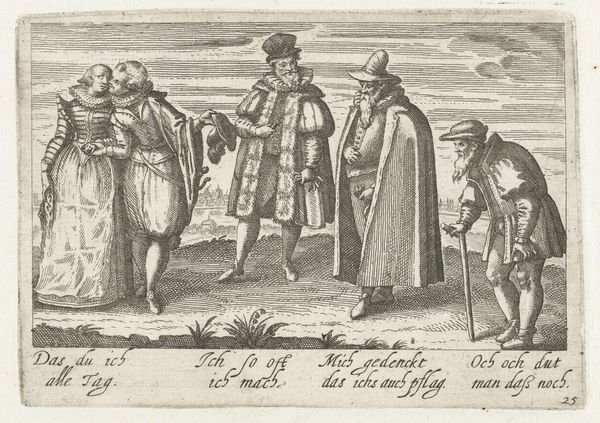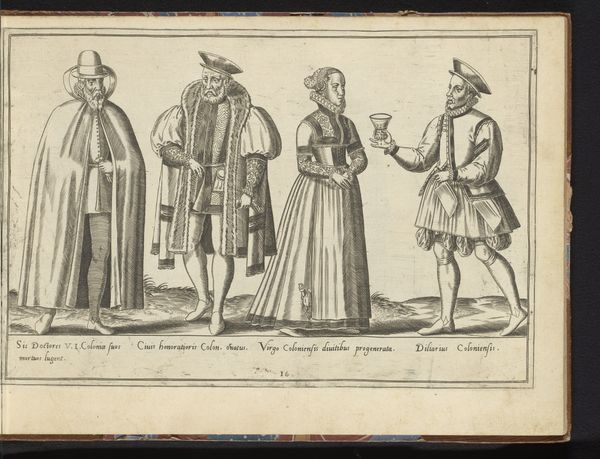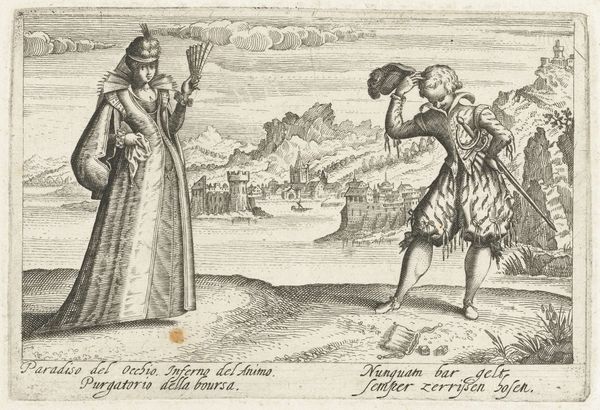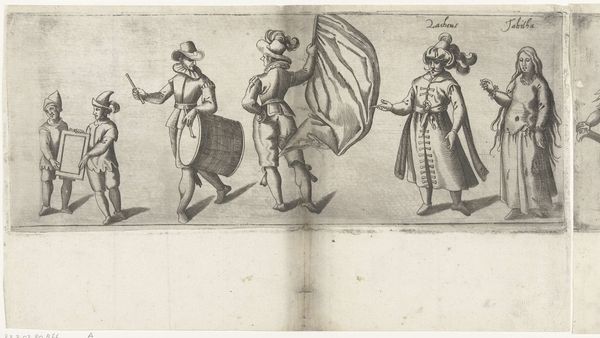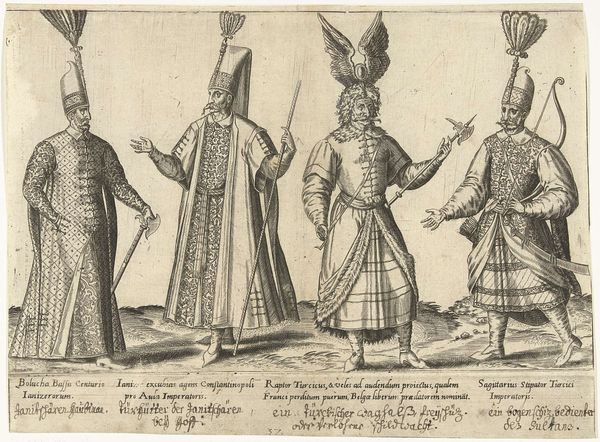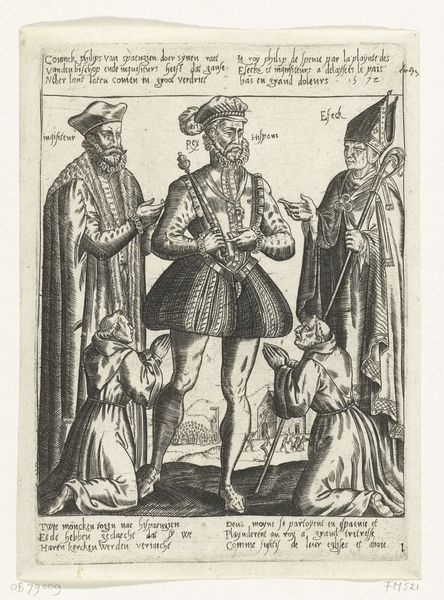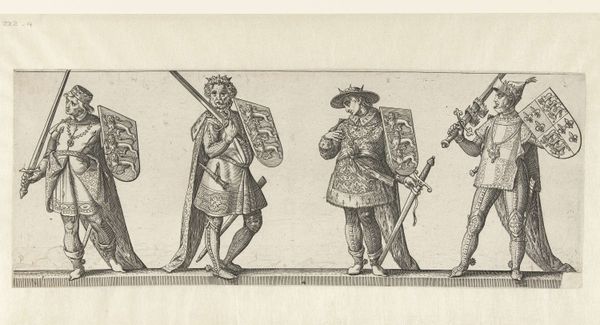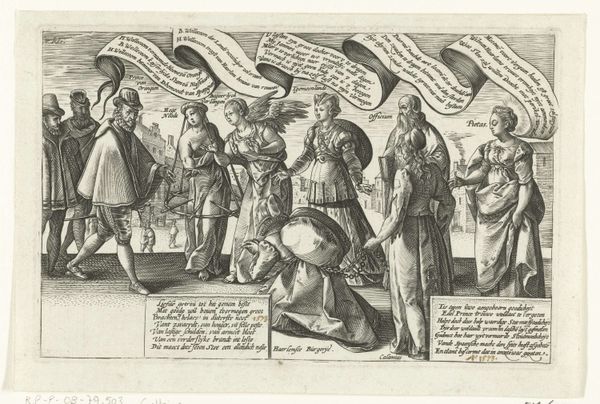
drawing, print, ink, engraving
#
portrait
#
drawing
# print
#
ink
#
orientalism
#
genre-painting
#
history-painting
#
academic-art
#
engraving
Dimensions: height 211 mm, width 324 mm
Copyright: Rijks Museum: Open Domain
Curator: Let's take a look at "Clothing of Ottoman Soldiers around 1580" by Abraham de Bruyn. It's currently housed here at the Rijksmuseum. Made around 1581, it is an engraving, employing ink, on what appears to be laid paper. Editor: My first impression is of meticulous detail. Look at the texture of the fabrics and the rendering of their distinctive headgear. There’s an almost ethnographic quality to it, yet the figures have a strange theatrical air, too. Curator: That’s astute. De Bruyn, like many artists of his time, was caught between observing and interpreting. This piece tells us a lot about the fascination with the Ottoman Empire in late 16th-century Europe. He presents them as a curiosity, cataloging their costumes and, by extension, their identities. Editor: And it is fascinating. The prominent turbans immediately signal otherness. But even within that, we see such variety. A cannon depicted with smoke, an ax with what appear to be halberds… Do these represent a particular rank or symbolic role? The long pipe could signal status as well? Curator: It’s very possible. The engraving process allowed for a dissemination of images and ideas that fueled the growing field of Orientalism. Think of the narratives such images propagated, contributing to both fear and desire for the "exotic" East. But I see it mostly as an example of what later became known as a ‘genre painting’. Editor: Genre certainly helps us look into society as well. The sword iconography, whether carried or strapped around, serves a double purpose—a personal weapon and an obvious signifier. Do you see that in all the subjects shown here? Curator: I think the level of equipment on each is designed to show each one's standing in the ranks. See the one without a blade; more footsoldier? It speaks to a certain social order and discipline expected within their ranks. De Bruyn is very intentional in that manner. Editor: Indeed. The piece, beyond its artistry, speaks to the West’s construction of the “Other.” Curator: Precisely, it's about how "they" looked, what they carried, even what they smoked, for a European audience. It’s both a record and a commentary. Editor: Well, by peeling back some of those layers, perhaps we can now see this artwork with fresh eyes.
Comments
No comments
Be the first to comment and join the conversation on the ultimate creative platform.

